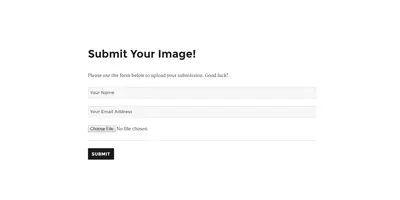Home >CMS Tutorial >WordPress >Enabling AJAX File Uploads in Your WordPress Plugin
Enabling AJAX File Uploads in Your WordPress Plugin
- Jennifer AnistonOriginal
- 2025-02-10 13:49:32255browse
This article demonstrates how to efficiently implement AJAX file uploads in a WordPress plugin by leveraging WordPress core's async-upload.php. This approach ensures code quality and simplifies development, bypassing the need to build a solution from scratch.

The core strategy is to utilize the existing async-upload.php file for asynchronous uploads, already validated and secure within the WordPress core. This method offers several advantages: established code quality, built-in validation, and pre-existing privilege checking.
Key Advantages of Using async-upload.php:
- Standard Code: Relies on proven WordPress core code, ensuring stability and security.
- Simplified Development: Eliminates the need for extensive validation and security checks.
- Efficiency: Streamlines the AJAX file upload process.
Essential Requirements:
The successful implementation of this method hinges on adhering to specific rules:
-
File Input Name: The file input's
nameattribute must be set to "async-upload". This is a critical requirement for compatibility withwp_ajax_upload_attachmentandmedia_handle_upload. -
Nonce Validation: The AJAX request must include a nonce using the
_wpnoncekey, generated withwp_create_nonce('media-form'). This ensures request authenticity. -
Action Key: The AJAX request data must contain an "action" key with the value "upload-attachment". This triggers the correct WordPress function within
async-upload.php.
Plugin Overview:
To illustrate this technique, a simple plugin is created allowing registered users to submit images for a contest. The plugin features:
- Shortcode Integration: Administrators can easily embed the submission form on any page using a shortcode.
- AJAX Uploads: Provides a seamless user experience with asynchronous image uploads.
- Admin Notification: Sends an email to the site administrator upon successful submission.
Plugin Functionality (Exclusions):
For brevity, the plugin does not include:
- Database storage of submissions.
- Backend submission viewing.
- Anonymous user uploads.
Plugin Implementation:
The plugin's structure is detailed below:
<code>wp-content/
|-- plugins/
|-- sitepoint-upload/
|-- js/
| |-- script.js
|--sitepoint-upload.php</code>
The sitepoint-upload.php file contains the plugin header and necessary functions for enqueueing scripts, registering shortcodes, and handling AJAX callbacks. The script.js file manages the frontend AJAX interactions.



The plugin's JavaScript (script.js) handles the AJAX upload process, including progress indicators, error handling, and image previews. The PHP code includes an AJAX callback function (su_image_submission_cb) to process submissions and notify the administrator via email. The plugin also modifies the subscriber role to grant upload_files capability.
Further Enhancements:
The article suggests several improvements for future development, including:
- Adding more form fields.
- Custom CSS styling.
- Database submission storage.
- Enhanced security validation.
Conclusion:
This method provides a robust and efficient approach to AJAX file uploads in WordPress plugins. By leveraging existing WordPress core functionality, developers can save time and ensure a secure, high-quality implementation. The complete source code is available on GitHub (link not provided in original text).
The above is the detailed content of Enabling AJAX File Uploads in Your WordPress Plugin. For more information, please follow other related articles on the PHP Chinese website!

